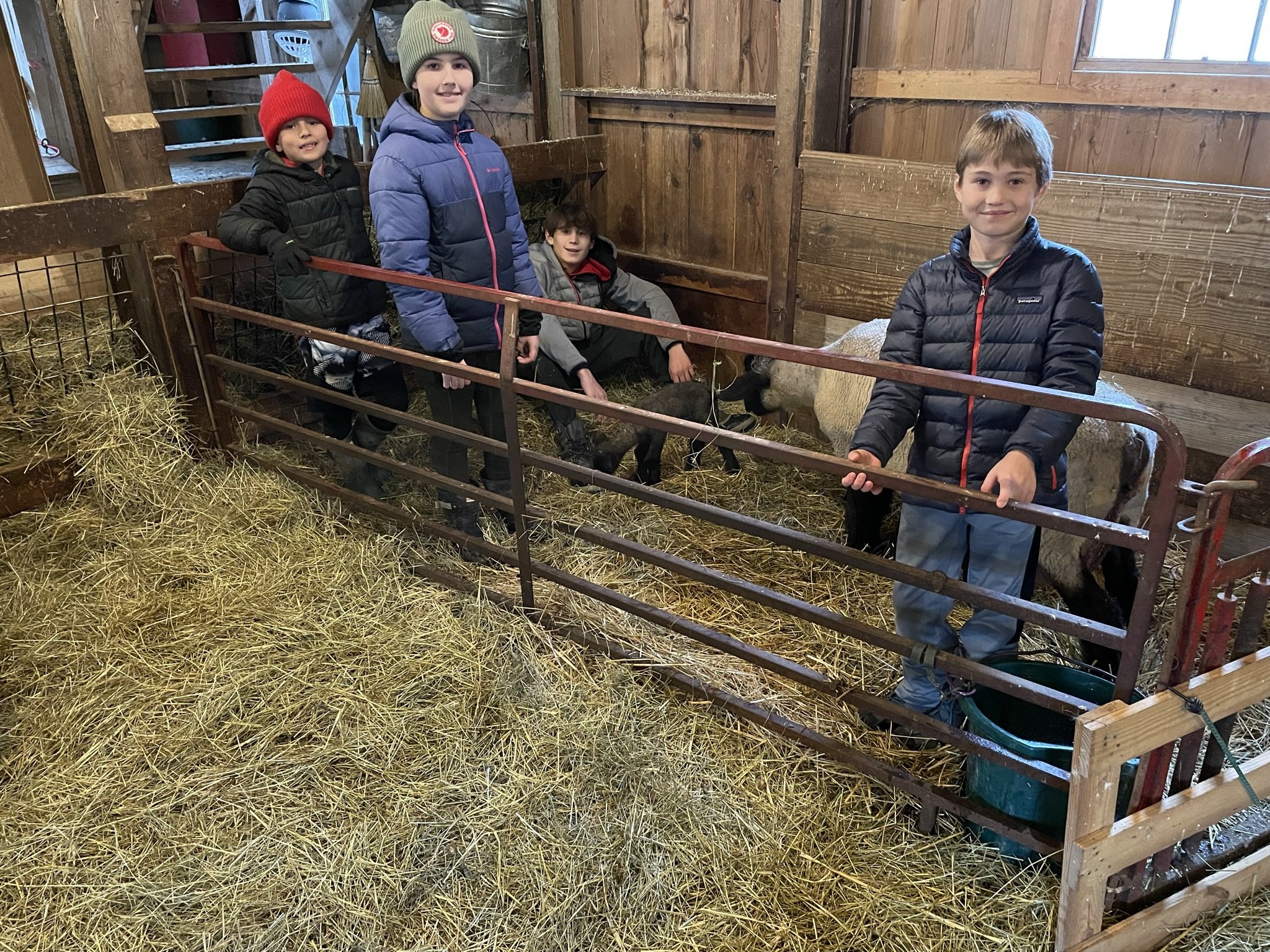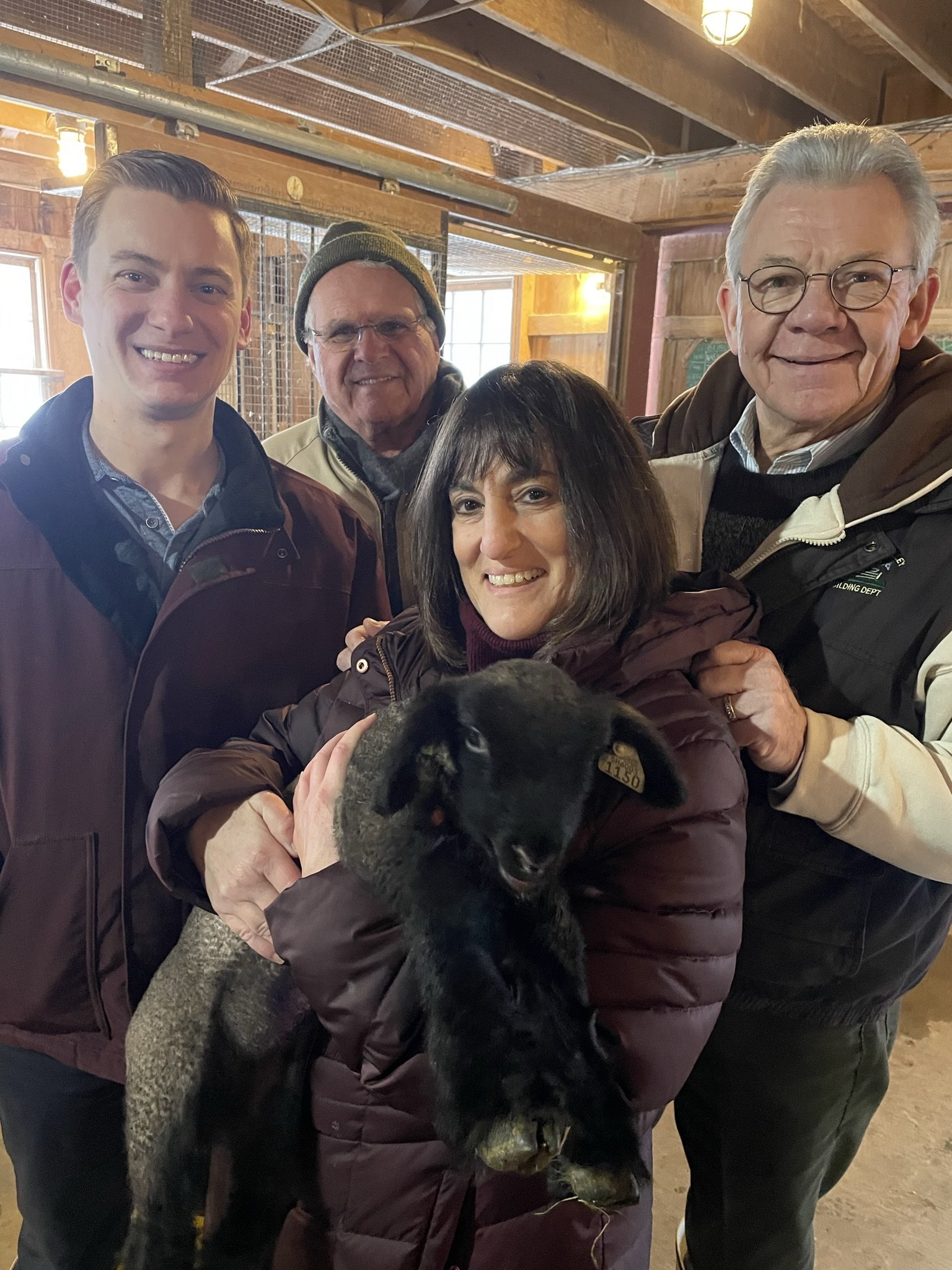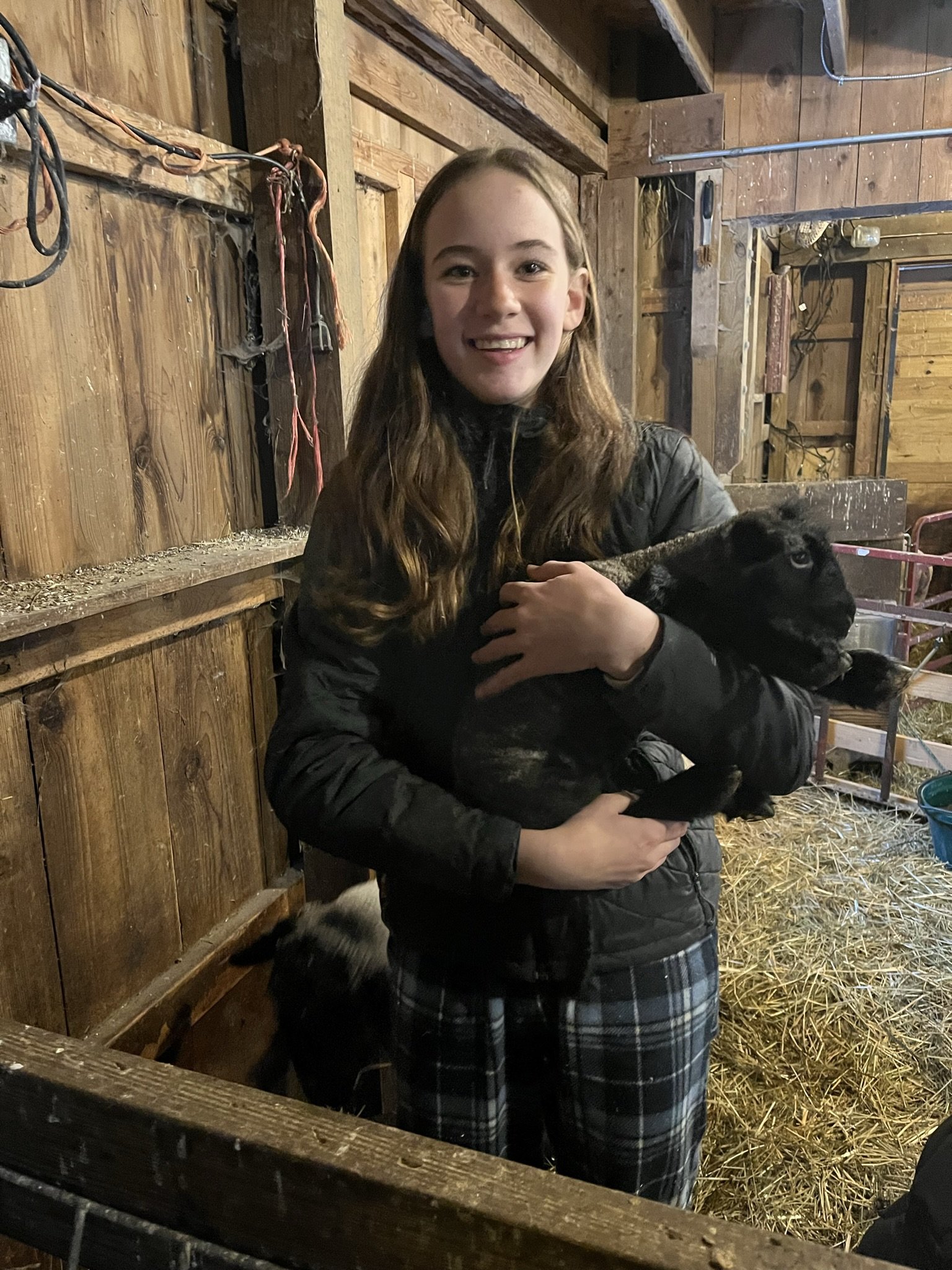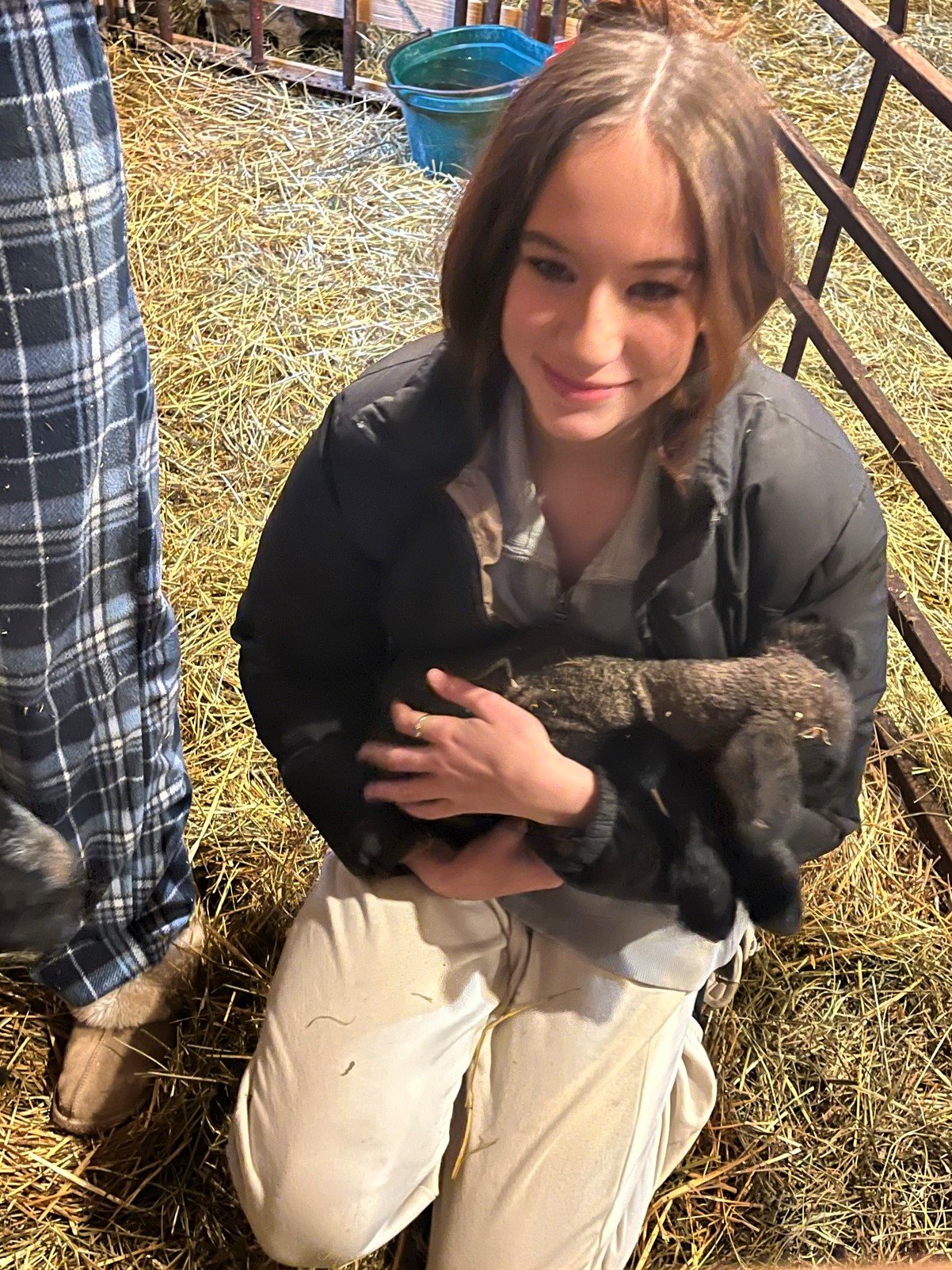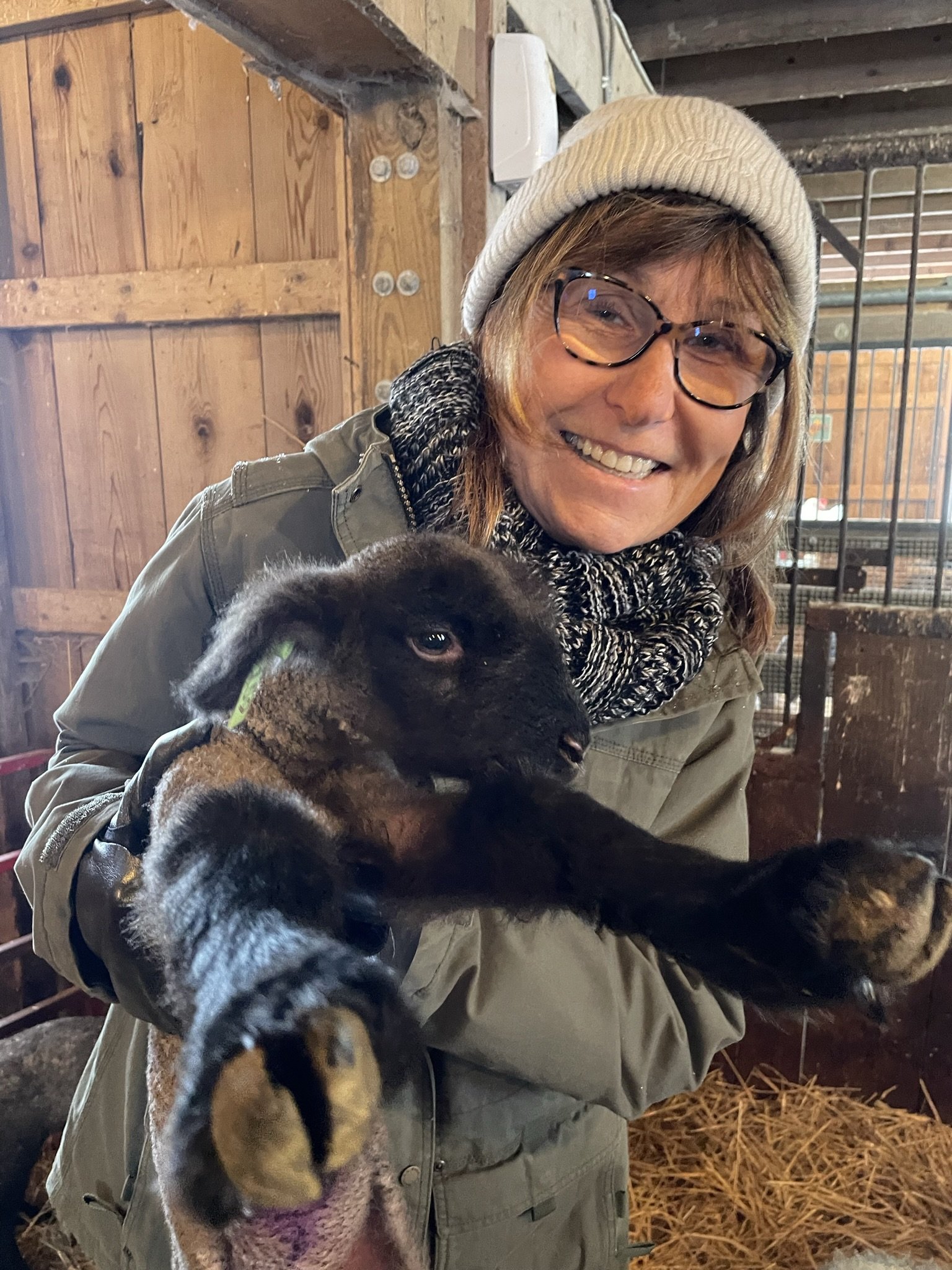Friends,
Writing this newsletter can be tough. Despite the intellectual stimulation, excitement hitting "Send," and joy of receiving your wonderful notes, the creative burden can be a bit much, and well, motivation can be an issue. So with creative, clever writing eluding my grasp, I ventured outside to split firewood. We certainly had colder weather this winter and this morning was not too brutal ... wishful thinking. The negative 5 degree wind-chill was an understatement! As my body temperature dropped, my writer's block evaporated.
Lambing this year was a season of surprises. The night the lambs were due, we watched an inspiring episode of All Creatures Great and Small, checked the cameras, waking every three hours, and waited ... did the taxes ... and waited ... cleaned out files ... and waited ... organized our closets ... and waited. The first lamb was born 5 days after the due date. And then in 16 hours, 4 ewes delivered 8 lambs, 1 ewe every 4 hours. The smallest ewes had twins, while two of the larger ewes had singles. One lamb was born at 19.2 pounds, literally the size of an average 1 year old toddler!! One ewe had all female triplets and is feeding them completely on her own. Another ewe delivered a second lamb an hour and a half after its first lamb (typically 20 minutes), and somehow birthed the lamb through the bars of the lambing jug into the next stall. Luckily, I saw it standing alone via the lamb cam ... But that little Houdini was not done with his tricks. The next day, I found him walking the aisle of the barn, completing outside of the sheep stall. Two ewes have yet to deliver, despite their large and growing size and appetite. And sadly, one ewe lost a twin 5 days after it was born, typically well past having issues.
But with the surprises came many beautiful moments. Spending time with Cyndi preparing and caring for the ewes and lambs. Experiencing the joy of successfully helping a ewe deliver her lamb with our neighbors and friend Adam intently watching. Having Lauren call to ask where the extra ewe came from in the stall, and realizing it was actually me she saw in my dirty, light tan jacket. Birthing 8 lambs one night over the course of 16 sleepless hours. Sharing a spiritual bond with the ewes to deliver their lambs, pulling when needed, and then cleaning and drying them together as partners, especially for twins and certainly when triplets. Stepping outside the barn at 2am on a perfectly still, crystal clear night, the snow covered ground lit by only a sliver of a moon, and the sky exploding with stars. I was again on a mountain in Wyoming, living the lyrics of a country song. And of course, the joy of watching 10 lambs perform their own ballet, circling the stall as a troupe, bobbing and weaving and jumping with joy, while their mothers dine at the feeder.
We have had many wonderful visitors (and are happy for more), especially our niece and nephews who loved being with the ewe and her triplets, naming their favorite Daisy. As well as the building department and planning and zoning leadership for Hunting Valley.
Despite my intro, the farm does not slow down during the winter. The chickens keep us busy with upwards of 3-4 dozen eggs a day. We just ordered 120 peeps and keets for delivery in July, delayed due to the price of eggs and popularity of backyard chickens. And we are deep into firewood splitting for next year. Cyndi will soon be starting vegetable plants in the greenhouse, and spring will be here before we know it. Buckeye Chuck predicts only another 6 weeks of winter : )
Today's fun fact concerns egg prices. As mentioned last newsletter, eggs prices are high, essentially doubling the past year. Prices are driven by a few factors. Generally, overall prices are higher due to inflation. That affects everything from labor costs to material costs for cartons. Feed prices in particular are much higher. For us, the average cost of a 50 pound bag of feed is up 25% since last January. The war in Ukraine contributes to higher feed prices as Russia and Ukraine are key suppliers for grain. Petroleum prices are also higher, raising the cost for transport and fertilizer that also feeds higher grain cost. The avian flu killed about 44 million hens (over 10%), especially during periods of peak demand for Easter and the holidays, greatly reducing supply. There are few alternatives to eggs, and generally speaking, they are still a great bargain as a food source.
Thank you as always for your friendship and support of the farm. We hope to see many of you soon
Harry
